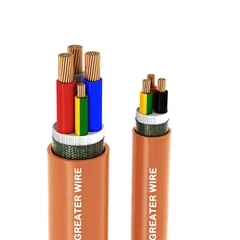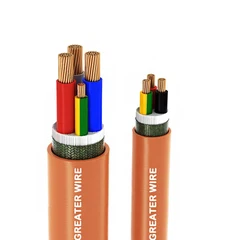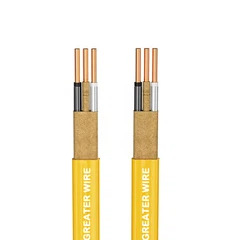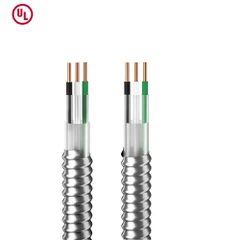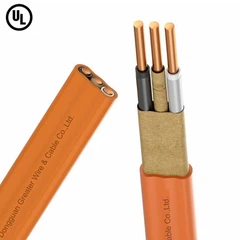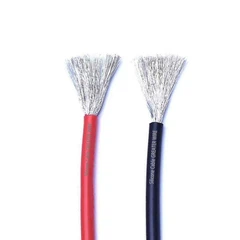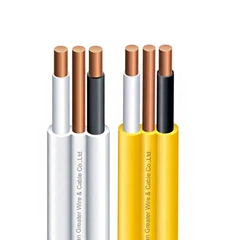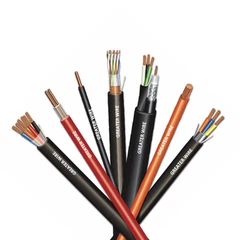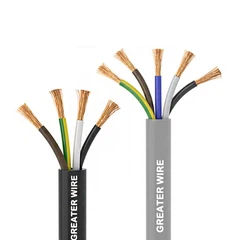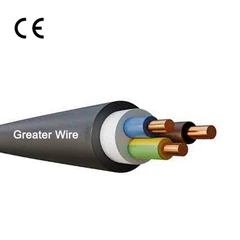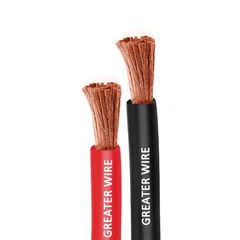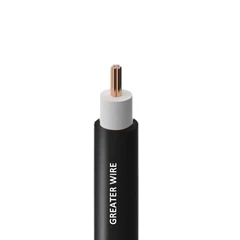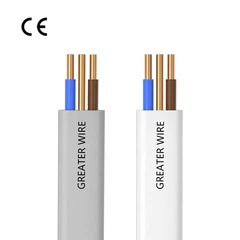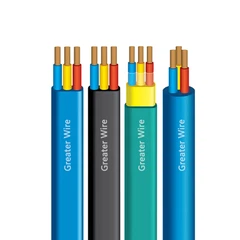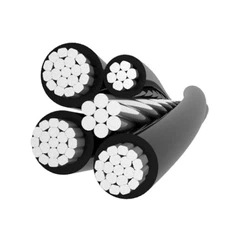The current-carrying capacity, or ampacity, of a cable is one of the most crucial factors to consider when selecting wiring for electrical systems. Understanding the current-carrying capacity ensures that the cable can safely handle the required electrical load without overheating or sustaining damage. Among the various types of cables used in industrial, commercial, and residential applications, the orange circular cable is highly popular for its durability, visibility, and versatility. But what exactly is the current-carrying capacity of an orange circular cable, and how can you determine the appropriate cable for specific applications? This article explores the ampacity of an orange circular cable, factors that influence it, and how to choose the right cable for your needs.
What is the Current-Carrying Capacity?
The current-carrying capacity of a cable, also known as ampacity, refers to the maximum amount of electric current a conductor or device can carry before sustaining damage or posing a safety risk. This value is typically expressed in amperes (amps) and is a critical parameter in ensuring electrical systems operate efficiently and safely.
If a cable is used beyond its current-carrying capacity, it may experience several adverse effects, including:
Overheating: When a cable carries more current than it is rated for, the wire's temperature increases. Excessive heat can damage the insulation, increase resistance, and potentially lead to fires.
Degradation of Insulation: Heat generated by excessive current can break down the insulation material, leading to short circuits, electrical failures, or even electric shocks.
Cable Failure: If the current exceeds the cable's design limits for prolonged periods, the conductor may break down or the cable may fail entirely.
Determining the correct current-carrying capacity for any cable is essential to ensure safe and efficient operation of electrical systems.
Orange Circular Cable: Features and Applications
An orange circular cable is a versatile type of electrical cable often used in industrial, commercial, and residential applications. The orange color of the insulation is typically chosen for visibility and safety, especially in environments where multiple cables are running alongside each other. These cables are often used for power distribution, control systems, and data transmission across various sectors.
Orange circular cables can be found in many forms, depending on the application, including:
Power cables for residential or commercial wiring.
Control cables for machinery and equipment.
Data cables for communication systems.
These cables often feature a combination of conductive materials, such as copper or aluminum, along with insulation layers designed to protect the conductors and the overall system from electrical hazards.
While the current-carrying capacity of an orange circular cable can vary based on the cable's construction, materials, and intended application, understanding how to calculate it is essential for selecting the right cable for a given task.
Factors Affecting the Current-Carrying Capacity of an Orange Circular Cable
The current-carrying capacity of an orange circular cable is influenced by several key factors, including:
1. Conductor Material
The material used for the conductor is one of the primary determinants of the cable's ampacity. The most common conductor materials are:
Copper: Copper is a highly conductive material and is the preferred choice for most electrical cables. Copper cables have lower resistance, which allows them to carry more current without generating excess heat. Copper cables are more efficient and are widely used for both residential and industrial wiring.
Aluminum: While aluminum is less conductive than copper, it is lighter and more cost-effective. However, aluminum cables typically require larger diameters for the same current-carrying capacity as copper cables. For orange circular cables that use aluminum conductors, the current-carrying capacity will be lower compared to copper cables of the same size.
2. Cable Size (Cross-Sectional Area)
The gauge or size of the cable, often represented by the cross-sectional area of the conductor (measured in square millimeters or AWG-American Wire Gauge), directly affects the current-carrying capacity. Larger cables with more copper or aluminum inside can carry more current than smaller cables with thinner conductors. The increased surface area of a larger conductor allows for better heat dissipation, reducing the risk of overheating.
In general:
Smaller cables (e.g., 1.5mm², 2.5mm²) are suitable for low-current applications.
Larger cables (e.g., 10mm², 16mm², 25mm²) are designed for higher-current applications and can handle more substantial power loads without excessive heating.
3. Insulation Material
The insulation material surrounding the conductor plays an important role in determining the cable's current-carrying capacity. Insulation materials such as PVC, XLPE (cross-linked polyethylene), or rubber affect the cable's heat resistance and the maximum temperature it can safely handle.
PVC insulation is common in low- and medium-voltage cables and offers basic insulation properties. However, PVC may not handle extreme temperatures or high current loads as efficiently as other materials.
XLPE insulation can withstand higher temperatures, making it more suitable for cables carrying higher currents. It also provides better resistance to electrical stress and can be used for both indoor and outdoor applications.
Rubber insulation is flexible and durable, offering high-temperature resistance. Rubber-insulated cables are often used in industrial environments.
4. Temperature Rating
Temperature is a critical factor affecting the current-carrying capacity of a cable. As the current passing through a cable increases, so does the heat generated. The insulation must be able to withstand these temperatures without breaking down. For example, a cable rated for high temperatures (e.g., up to 90°C) will typically have a higher current-carrying capacity than one rated for lower temperatures.
In certain environments, the temperature of the surroundings (such as high ambient temperatures in industrial settings or outdoor installations) may impact the cable's ability to carry current without overheating. Manufacturers typically specify the maximum operating temperature for the cable.
5. Installation Conditions
The conditions in which the orange circular cable is installed also affect its ampacity. Cables installed in free air, with adequate ventilation, can dissipate heat more effectively than cables installed in conduits or buried underground. When cables are placed in ducts or underground, heat buildup may occur, and the current-carrying capacity must be adjusted accordingly.
Additionally, the number of cables installed together can impact their ampacity. Cables grouped closely together may face higher temperatures, reducing their ability to carry current safely.
6. Length of the Cable
The longer the cable, the greater the resistance the current will face. Over long distances, the voltage may drop, and the cable may require a larger size to compensate for this loss. For high-current applications over long distances, selecting the correct cable size and understanding the impact of length on current-carrying capacity is crucial.
How to Calculate the Current-Carrying Capacity of an Orange Circular Cable
To calculate the current-carrying capacity of an orange circular cable, several steps need to be followed. Cable manufacturers often provide ampacity tables that give the maximum current values based on different wire sizes, materials, and insulation types. However, it is also possible to estimate the ampacity using the following formula:
Ampacity (I) = (Voltage Rating x Conductor Area) / (Conductor Resistance x Cable Length)
This formula can help estimate the maximum current for a given cable, but it is always advisable to refer to manufacturer specifications and local electrical codes for precise values.
Typical Current-Carrying Capacity for Orange Circular Cables
The current-carrying capacity of an orange circular cable will depend on the cable's construction and insulation type, as well as the wire gauge. Below are some general examples of current-carrying capacities for copper-based orange circular cables in different sizes:
1.5mm²: Up to 13-16 amps (depending on insulation and installation conditions).
2.5mm²: Up to 20-25 amps.
4mm²: Up to 25-30 amps.
10mm²: Up to 50-60 amps.
16mm²: Up to 70-85 amps.
25mm²: Up to 100-120 amps.
For larger cables with aluminum conductors, these values will typically be lower.
Applications and Selection of the Right Cable
The current-carrying capacity of an orange circular cable will dictate its suitability for various applications. For instance:
Residential Wiring: Low to medium current-carrying capacity cables (1.5mm² to 4mm²) are commonly used in homes for lighting and power circuits.
Industrial Settings: Higher current-carrying capacity cables (10mm² to 25mm² or more) are used in factories, machinery, and large-scale operations.
Outdoor or Temporary Installations: Cables with adequate ampacity for outdoor or temporary setups (e.g., construction sites or event setups) must be able to handle the expected current load and environmental conditions.

